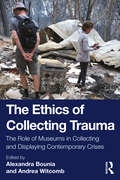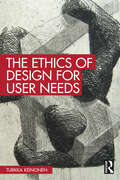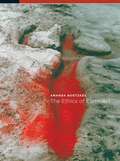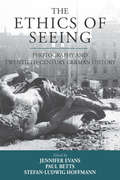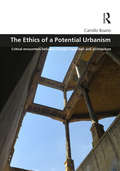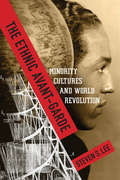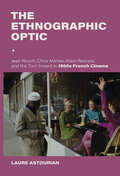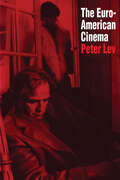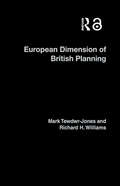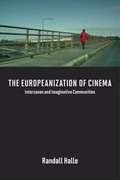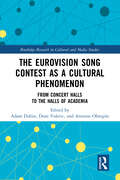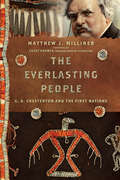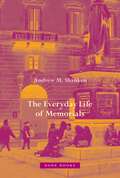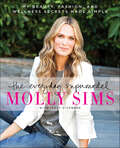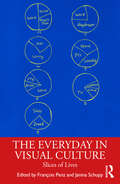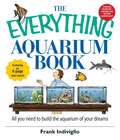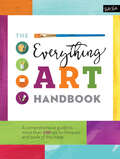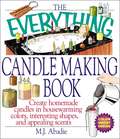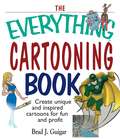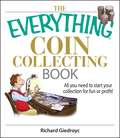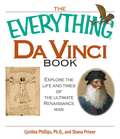- Table View
- List View
The Ethics of Collecting Trauma: The Role of Museums in Collecting and Displaying Contemporary Crises
by Alexandra BouniaThe Ethics of Collecting Trauma offers an interdisciplinary dialogue on the ethics of contemporary museums that are involved in collecting moments of collective trauma.Including a range of international contributions, the volume explores the ethics of collecting material that documents contemporary traumatic events. The case studies focus on four categories of such events: forced migration; terrorism attacks; major natural disasters; and cultural traumas, such as the ongoing legacy of colonization. Contributors consider whether cultural institutions have a right to collect materials about these events and what kind of materials they should focus on, if so; who is being memorialized, who should hold the power to decide what is collected, and what the critical timeline for such initiatives is. The volume also considers what the larger purpose of such collecting is and how to deal with past collecting practices, arguing that museums need to consider, in a careful and deliberate way, their ethical responsibilities as cultural institutions.The Ethics of Collecting Trauma will be of interest to academics and students working in the areas of museum and heritage studies, cultural studies, trauma studies, memory studies, and migration studies. The book will also appeal to museum professionals working around the globe.
The Ethics of Design for User Needs
by Turkka KeinonenThis book offers an inquiry into the ethics of ‘human needs capture’ for design purposes by drawing upon ethical theories and narratives. Designers have historically relied upon the satisfaction of human needs as a moral justification for their profession. This volume offers an alternative critique to challenge this perspective, arguing that seeking to satisfy needs doesn't offer sufficient moral justification on its own. It presents an extensive ethical analysis of the notion of need and develops a thought-provoking case for a plural reconceptualisation of the notion of ‘need’ as user-based knowledge about product and service improvement opportunities. It does this by drawing upon a range of ethical approaches including Soran Reader’s needs ethics, classical utilitarianism, Robert Nozick’s libertarian philosophy, and John Rawls’ theory of justice. The book goes on to link these approaches to concepts guiding design such as human-centred design, collaborative design, and end user innovation. Written as a dialogue between a designer and his consciousness, the book underlines the deliberative nature of applied design ethics, and also highlights how consciousness challenges designers to solve their moral dilemmas. This engaging format invites readers to become an intimate part of the ‘discussion’. This book will be of interest to students and academics studying product design, industrial design, interaction design, user experience design, design ethics, and sustainable development.
The Ethics of Earth Art
by Amanda BoetzkesSince its inception in the 1960s, the earth art movement has sought to make visible the elusive presence of nature. Though most often associated with monumental land-based sculptures, earth art encompasses a wide range of media, from sculpture, body art performances, and installations to photographic interventions, public protest art, and community projects. In The Ethics of Earth Art, Amanda Boetzkes analyzes the development of the earth art movement, arguing that such diverse artists as Robert Smithson, Ana Mendieta, James Turrell, Jackie Brookner, Olafur Eliasson, Basia Irland, and Ichi Ikeda are connected through their elucidation of the earth as a domain of ethical concern. Boetzkes contends that in basing their works&’ relationship to the natural world on receptivity rather than representation, earth artists take an ethical stance that counters both the instrumental view that seeks to master nature and the Romantic view that posits a return to a mythical state of unencumbered continuity with nature. By incorporating receptive surfaces into their work—film footage of glaring sunlight, an aperture in a chamber that opens to the sky, or a porous armature on which vegetation grows—earth artists articulate the dilemma of representation that nature presents. Revealing the fundamental difference between the human world and the earth, Boetzkes shows that earth art mediates the sensations of nature while allowing nature itself to remain irreducible to human signification.
The Ethics of Seeing: Photography and Twentieth-Century German History (Studies in German History #21)
by Stefan-Ludwig Hoffmann Paul Betts Jennifer EvansThroughout Germany's tumultuous twentieth century, photography was an indispensable form of documentation. Whether acting as artists, witnesses, or reformers, both professional and amateur photographers chronicled social worlds through successive periods of radical upheaval. The Ethics of Seeing brings together an international group of scholars to explore the complex relationship between the visual and the historic in German history. Emphasizing the transformation of the visual arena and the ways in which ordinary people made sense of world events, these revealing case studies illustrate photography's multilayered role as a new form of representation, a means to subjective experience, and a fresh mode of narrating the past.
The Ethics of a Potential Urbanism: Critical encounters between Giorgio Agamben and architecture (Design and the Built Environment)
by Camillo BoanoThe Ethics of a Potential Urbanism explores the possible and potential relevance of Giorgio Agamben’s political thoughts and writings for the theory and the practice of architecture and urban design. It sketches out the potentiality of Agamben’s politics, which can affect change in current architectural and design discourses. The book investigates the possibility of an inoperative architecture, as an ethical shift for a different practice, just a little bit different, but able to deactivate the sociospatial dispositive and mobilize a new theory and a new project for the urban now to come. This particular reading from Agamben’s oeuvre suggests a destituent mode of both thinking and practicing of architecture and urbanism that could possibly redeem them from their social emptiness, cultural irrelevance, economic reductionism and proto-avant-garde extravagance, contributing to a renewed critical ‘encounter’ with architecture’s aesthetic-political function.
The Ethnic Avant-Garde: Minority Cultures and World Revolution (Modernist Latitudes)
by Steven S. LeeDuring the 1920s and 1930s, American minority artists and writers collaborated extensively with the Soviet avant-garde, seeking to build a revolutionary society that would end racial discrimination and advance progressive art. Making what Claude McKay called "the magic pilgrimage" to the Soviet Union, these intellectuals placed themselves at the forefront of modernism, using radical cultural and political experiments to reimagine identity and decenter the West. Shining rare light on these efforts, The Ethnic Avant-Garde makes a unique contribution to interwar literary, political, and art history, drawing extensively on Russian archives, travel narratives, and artistic exchanges to establish the parameters of an undervalued "ethnic avant-garde." These writers and artists cohered around distinct forms that mirrored Soviet techniques of montage, fragment, and interruption. They orbited interwar Moscow, where the international avant-garde converged with the Communist International. The book explores Vladimir Mayakovsky's 1925 visit to New York City via Cuba and Mexico, during which he wrote Russian-language poetry in an "Afro-Cuban" voice; Langston Hughes's translations of these poems while in Moscow, which he visited to assist on a Soviet film about African American life; a futurist play condemning Western imperialism in China, which became Broadway's first major production to feature a predominantly Asian American cast; and efforts to imagine the Bolshevik Revolution as Jewish messianic arrest, followed by the slow political disenchantment of the New York Intellectuals. Through an absorbing collage of cross-ethnic encounters that also include Herbert Biberman, Sergei Eisenstein, Paul Robeson, and Vladimir Tatlin, this work remaps global modernism along minority and Soviet-centered lines, further advancing the avant-garde project of seeing the world anew.
The Ethnographic Optic: Jean Rouch, Chris Marker, Alain Resnais, and the Turn Inward in 1960s French Cinema (New Directions in National Cinemas)
by Laure AstourianThe Ethnographic Optic traces the surprising role of ethnography in French cinema in the 1960s and examines its place in several New Wave fictions and cinéma vérité documentaries during the final years of the French colonial empire. Focusing on prominent French filmmakers Jean Rouch, Chris Marker, and Alain Resnais, author Laure Astourian elucidates their striking pivot from centering their work on distant lands to scrutinizing their own French urban culture. As awareness of the ramifications of the shrinking empire grew within metropolitan France, these filmmakers turned inward what their similarly white, urban, bourgeois predecessors had long turned outward toward the colonies: the ethnographic gaze.Featuring some of the most canonical and best-loved films of the French tradition, such as Moi, un Noir, La jetée, and Muriel, this is an essential book for readers interested in national identity and cinema.
The Euro-American Cinema (Texas Film and Media Studies Series)
by Peter LevFrom as scholar of mass communications, an international study of the influence of Hollywood movies on twentieth-century European art films. With McDonalds in Moscow and Disneyland in Paris and Tokyo, American popular culture is spreading around the globe. Regional, national, and ethnic cultures are being powerfully affected by competition from American values and American popular forms. This literate and lively study explores the spread of American culture into international cinema as reflected by the collision and partial merger of two important styles of filmmaking: the Hollywood style of stars, genres, and action, and the European art film style of ambiguity, authorial commentary, and borrowings from other arts. Peter Lev departs from the traditional approach of national cinema histories and discusses some of the blends, overlaps, and hegemonies that are typical of the world film industry of recent years. In Part One, he gives a historical and theoretical overview of what he terms the &“Euro-American art film,&” which is characterized by prominent use of the English language, a European art film director, cast and crew from at least two countries, and a stylistic mixing of European art film and American entertainment. The second part of Lev&’s study examines in detail five examples of the Euro-American art film: Contempt (1963), Blow-Up (1966), The Canterbury Tales (1972), Paris, Texas (1983), and The Last Emperor (1987). These case studies reveal that the European art film has had a strong influence on world cinema and that many Euro-American films are truly cultural blends rather than abject takeovers by Hollywood cinema.
The European Dimension of British Planning
by Mark Tewdwr-Jones Richard H. WilliamsThe UK government of Tony Blair is committed to fostering a European dimension of planning practice. Significant developments in relation to planning within Europe are occurring. The creation of the European Spatial Development Perspective, the reform of the Structural Funds, and the implementation of programmes to foster trans-national co-operation between governments, will all impact on UK government, and on planning system in particular. Even within the UK, devolution and regionalisation will bring new pressures for overall co-ordination on the issue of European spatial planning. Issues concerning the revisions of the Structural Funds in 2000 and 2006, and funding opportunities for local authorities, are closely connected with the theme of this book. More importantly, it is expected that the link between funding and spatial policy within British planning will become more clearly defined during this period. The European dimension of British planning, as a consequence, may grow significantly over the next few years.The authors tackle four key issues in their discussion of this topic: * British political attitudes to Europeanisation issues* The changing relationships between different arms of the state* The often complex interdependencies between tiers of governance* The rapidly changing definition of British urban and regional planning
The Europeanization of Cinema: Interzones and Imaginative Communities
by Randall HalleIn this innovative study, German and film studies scholar Randall Halle advances the concept of "interzones"--geographical and ideational spaces of transit, interaction, transformation, and contested diversity--as a mechanism for analyzing European cinema. He focuses especially on films about borders, borderlands, and cultural zones as he traces the development of interzones from the inception of central European cinema to the avant-garde films of today. Throughout, he shows how cinema both reflects and engenders interzones that explore the important questions of Europe's social order: imperialism and nation-building in the late nineteenth and early twentieth centuries; "first contact" between former adversaries (such as East and West Germany) following World War II and the Cold War; and migration, neo-colonialism, and cultural imperialism in the twenty-first century. Ultimately, Halle argues that today's cinema both produces and reflects imaginative communities. He demonstrates how, rather than simply erasing boundaries, the European Union instead fosters a network of cultural interzones that encourage cinematic exploration of the new Europe's processes and limits of connectivity, tolerance, and cooperation.
The Eurovision Song Contest as a Cultural Phenomenon: From Concert Halls to the Halls of Academia (Routledge Research in Cultural and Media Studies)
by Antonio ObregónDrawing from the wealth of academic literature about the Eurovision Song Contest (ESC) written over the last two decades, this book consolidates and recognizes the ESC's relevance in academia by analysing its contribution to different fields of study. The book brings together leading ESC scholars from across disciplines and from across the globe to reflect on the intersection between their academic fields of study and the ESC by answering the question: what has the ESC contributed to academia? The book also draws from fields rarely associated with the ESC, such as Law, Business and Research Methodologies, to demonstrate the contest's broad utility in research, pedagogy and in practice. Given its interdisciplinary approach, this volume will be of interest to scholars and students working in cultural, media, and music studies, as well as those interested in the intersections between these areas and politics, law, education, pedagogy, and history.
The Everlasting People: G. K. Chesterton and the First Nations (Hansen Lectureship Series)
by Matthew J. MillinerFirst Things Book of the Year award What does the cross of Christ have to do with the thunderbird? How might the life and work of Christian writer G. K. Chesterton shed light on our understanding of North American Indigenous art and history? This unexpected connection forms the basis of these discerning reflections by art historian Matthew Milliner. In this fifth volume in the Hansen Lectureship Series, Milliner appeals to Chesterton's life and work—including The Everlasting Man, his neglected poetry, his love for his native England, and his own visits to America—in order to understand and appreciate both Indigenous art and the complex, often tragic history of First Nations peoples, especially in the American Midwest. The Hansen Lectureship series offers accessible and insightful reflections by Wheaton College faculty on the transformative work of the Wade Center authors.
The Everyday Experiences of Reconstruction and Regeneration: From Vision to Reality in Birmingham and Coventry
by David Adams Peter LarkhamSet within a wider British and international context of post-war reconstruction, The Everyday Experiences of Reconstruction and Regeneration focuses on such debates and experiences in Birmingham and Coventry as they recovered from Second World War bombings and post-war industrial collapse. Including numerous images, Adams and Larkham explore the initial development of the post-Second World War reconstruction projects, which so substantially changed the face of the cities and provided radical new identities. Exploring these cities throughout the post-war period brings into sharp focus the duality of contemporary approaches to regeneration, which often criticise mid-twentieth century ’poorly-conceived’ planning and architectural projects for producing inhuman and unsympathetic schemes, while proposing exactly the type of large-scale regeneration that may potentially create similar issues in the future. This book would be beneficial for academics and students of planning and urban design, particularly those with an interest in post-catastrophe or large-scale reconstruction projects within cities.
The Everyday Life of Memorials
by Andrew M. ShankenA timely study, erudite and exciting, about the ordinary—and oftentimes unseen—lives of memorialsMemorials are commonly studied as part of the commemorative infrastructure of modern society. Just as often, they are understood as sites of political contestation, where people battle over the meaning of events. But most of the time, they are neither. Instead, they take their rest as ordinary objects, part of the street furniture of urban life. Most memorials are “turned on” only on special days, such as Memorial Day, or at heated moments, as in August 2017, when the Robert E. Lee monument in Charlottesville was overtaken by a political maelstrom. The rest of the time they are turned off. This book is about the everyday life of memorials. It explores their relationship to the pulses of daily life, their meaning within this quotidian context, and their place within the development of modern cities. Through Andrew Shanken’s close historical readings of memorials, both well-known and obscure, two distinct strands of scholarship are thus brought together: the study of the everyday and memory studies. From the introduction of modern memorials in the wake of the French Revolution through the recent destruction of Confederate monuments, memorials have oscillated between the everyday and the “not-everyday.” In fact, memorials have been implicated in the very structure of these categories. The Everyday Life of Memorials explores how memorials end up where they are, grow invisible, fight with traffic, get moved, are assembled into memorial zones, and are drawn anew into commemorations and political maelstroms that their original sponsors never could have imagined. Finally, exploring how people behave at memorials and what memorials ask of people reveals just how strange the commemorative infrastructure of modernity is.
The Everyday Supermodel: My Beauty, Fashion, and Wellness Secrets Made Simple
by Molly Sims Tracy O'ConnorWith down-to-earth charm, humor, and best-girlfriend tough love, supermodel next door Molly Sims shares her hard-earned beauty, fashion, fitness, and health secrets in this fully illustrated four-color guide.Molly Sims wasn’t born looking the way she does on television and in print. Like all of us, she’s had bad hair days, weight issues, skin problems, career setbacks, and fashion disasters. The secret to her seemingly perfect supermodel look and confidence? She works hard to look good . . . and she’s tried everything,In this fun and practical guide, Molly interweaves stories from her life with her own tried-and-true tips, as well as advice from the best in the business of beauty, health, fitness, and fashion. The ultimate guinea pig when it comes to looking good and feeling good, she’s learned what works—and what doesn’t—and is prepared to share it all with women everywhere.Not afraid to dish on herself, Molly breaks down her personal weight loss strategies, anti-aging secrets, style advice, and so much more. Filled with insider secrets, easy to follow hair and makeup tutorials, on-the-go workouts, healthy recipes, and look good/feel good advice, it truly is a Hollywood tell-all! The Everyday Supermodel is guaranteed to transform the everyday woman into the very best version of herself.
The Everyday Writing Center
by Meg Carroll Anne Ellen Geller Elizabeth H. Boquet Frankie Condon Michele EodiceThe Everyday Writing Center challenges some of the most comfortable traditions in its field, and it does so with a commitment and persuasiveness that one seldom sees in scholarly discussion. The book, at its core, is an argument for a new writing center consciousness--one that makes the most of the writing center's unique, and uniquely fluid, identity. Writing center specialists live with a liminality that has been acknowledged but not fully explored in the literature. Their disciplinary identity is with the English department, but their mission is cross-disciplinary; their research is pedagogical, but they often report to central administration. Their education is in humanities, but their administrative role demands constant number-crunching. This fluid identity explains why Trickster--an icon of spontaneity, shape-shifting, and the creative potential of chaos--has come to be a favorite cultural figure for the authors of this book. Adapting Lewis Hyde and others, these authors use Trickster to develop a theme of ordinary disruptions ("the everyday") as a source of provocative learning moments that can liberate both student writers and writing center staff. At the same time, the authors parlay Etienne Wenger's concept of "community of practice" into an ethos for a dynamic, learner-centered pedagogy that is especially well-suited to the peculiar teaching situation of the writing center. Through Trickster, they question not only accepted approaches to writing center pedagogy, but conventional approaches to race, time, leadership, and collaboration as well. They encourage their field to exploit the creative potential in ordinary events that are normally seen as disruptive or defeating, and they challenge traditions in the field that tend to isolate a writing center director from the department and campus. Yet all is not random, for the authors anchor this high-risk/high-yield approach in their commitment to a version of Wenger's community of practice. Conceiving of themselves, their colleagues, student writers, and student tutors as co-learners engaged together in a dynamic life of learning, the authors find a way to ground the excess and randomness of the everyday, while advancing an ethic of mutual respect and self-challenge. Committed to testing a region beyond the edge of convention, the authors of The Everyday Writing Center constantly push themselves and their field toward deeper, more significant research, and more reflective, dynamic teaching.
The Everyday in Visual Culture: Slices of Lives
by François Penz Janina SchuppThis book explores how the comparative analysis of visual cultural artefacts, from objects to architecture and fiction films, can contribute to our understanding of everyday life in homes and cities around the globe. Investigating the multiple facets of the everyday, this interdisciplinary collection generates a new awareness of everyday lives across cultures and challenges our traditional understanding of the everyday by interweaving new thematic connections. It brings together debates around the analysis of the everyday in visual culture more broadly and explores the creation of innovative technological methods for comparative approaches to the study of the everyday, such as film databases, as well as the celebration of the everyday in museums. The volume is organized around four key themes. It explores the slices of everyday lives found in Visual Culture (Part I), Museums (Part II), the City (Part III) and the Home (Part IV). The book explores the growing area of the analysis of everyday life through visual culture both broadly and in depth. By building interdisciplinary connections, this book is ideal for the emerging community of scholars and students stemming from Visual Culture, Film and Media Studies, Architecture Studies and practice, Museum Studies, and scholars of Sociology and Anthropology as well as offering fresh insights into cutting-edge tools and practices for the rapidly growing field of Digital Humanities.
The Everything Aquarium Book: All You Need to Build the Acquarium of Your Dreams
by Frank IndiviglioA Simon & Schuster eBook. Simon & Schuster has a great book for every reader.
The Everything Art Handbook: A Comprehensive Guide to More Than 100 Art Techniques and Tools of the Trade
by Walter Foster Creative TeamPick up your pencil or brush and start creating with this go-to resource for artists of all skill levels, covering drawing, painting, and mixed media.A refreshing, accessible compendium of art materials and techniques, The Everything Art Handbook is the perfect all-inclusive resource for beginning artists wanting to experiment and play with a variety of art mediums and techniques.The Everything Art Handbook is divided into sections focusing on different types of mediums and art concepts. Each section includes a basic overview of the topic, instructions for selecting and working with the right tools and materials, step-by-step sample artwork, and helpful sidebars with advice from professional artists.Expand and refresh your artistic skills with such topics as:Getting started, including how to set up a studio and where to find inspirationArt fundamentals, such as value and light, perspective, and compositionColor basics, including complementary colors, primaries, secondaries, and neutralsDrawing techniques for working with graphite, charcoal, colored pencil, pastel, pen and ink, and morePainting techniques for working with oil, acrylic, and watercolorMixed media tools and techniques, including stamping, encaustics, and texturesUsing clear, informative explanations for achieving the best results, The Everything Art Handbook is an approachable reference guide for contemporary artists of any skill level.
The Everything Candlemaking Book: Create Homemade Candles in House-Warming Colors, Interesting Shapes, and Appealing Scents (Everything® Series)
by Marie-Jeanne AbadieNow, with The Everything Candlemaking Book, you can enjoy the charm of candles every day, rather than reserve them only for holidays or fancy dinner parties. Home candlemaking is not only much more economical than buying premade candles--it's also a lot more fun! The Everything Candlemaking Book is a complete guide to making all kinds of candles at home, beginning with what you need to get started. Easy-to-follow steps lead you through the process of candlemaking--from making simple tapers and columns to layered, moulded, twisted, and more. Beautiful full-color photographs provide inspiration for creativity, whether you're designing your own unique shapes and color combinations or attempting advanced techniques.This guide includes all you need to know to get started:tools and supplies neededinstructions on how to make candles for holidays and special occasionsartistic techniques, such as chip, twisted, and applique candlesguidance on using unique containerstips on how to incorporate candles into ritualshints on adding scents and personal touches to your candlesand so much more!With The Everything Candlemaking Book, you'll be making homemade candles for yourself and your friends in no time!
The Everything Cartooning Book: Create Unique And Inspired Cartoons For Fun And Profit (Everything® Series)
by Brad J GuigarNo matter what your background, The Everything Cartooning Book is the all-in-one reference to unlock your hidden potential and set you on the fast track toward a rewarding career in cartooning. Professional cartoonist Brad J. Guigar shows you everything from how to create believable characters and effective story lines to writing humor and getting published. This step-by-step guide shows you all the insider techniques and tricks you need to make it in this fun and creative field.Features tips on how to:Show movementCreate cartoons for different genresDevelop your individual styleCraft story linesSell your workand moreWhether you like to draw Manga, create humorous animal characters, or satirize the world around you, The Everything Cartooning Book teaches you all you need to know to successfully follow your artistic dreams.
The Everything Coin Collecting Book
by Richard GiedroycAre you one of the 125 million coin collectors in the United States? Whether you're a beginner or an avid collector,The Everything Coin Collecting Bookis your accessible reference for this exciting and profitable hobby. Written by a well-known numismatic authority, this is only authoritative guide written in an approachable style for every reader. ReadThe Everything Coin Collecting Bookand you'll learn about: Starting and maintaining a collection Coin terminology Grading and authenticating coins Rarity and coin values Covering it all-from starting a collection, to selling and trading like a pro-this is the all-in-one guide you need to maintain a successful collection and trade for profit.
The Everything Coin Collecting Book
by Richard GiedroycAre you one of the 125 million coin collectors in the United States? Whether you're a beginner or an avid collector, The Everything Coin Collecting Book is your accessible reference for this exciting and profitable hobby. Written by a well-known numismatic authority, this is only authoritative guide written in an approachable style for every reader.Read The Everything Coin Collecting Book and you'll learn about: Starting and maintaining a collection Coin terminology Grading and authenticating coins Rarity and coin values Covering it all-from starting a collection, to selling and trading like a pro-this is the all-in-one guide you need to maintain a successful collection and trade for profit.
The Everything Coin Collecting Book: All You Need to Start Your Collection And Trade for Profit
by Richard GiedroycAre you one of the 125 million coin collectors in the United States? Whether you're a beginner or an avid collector, The Everything Coin Collecting Book is your accessible reference for this exciting and profitable hobby. Written by a well-known numismatic authority, this is only authoritative guide written in an approachable style for every reader.Read The Everything Coin Collecting Book and you'll learn about:Starting and maintaining a collectionCoin terminologyGrading and authenticating coinsRarity and coin valuesCovering it all-from starting a collection, to selling and trading like a pro-this is the all-in-one guide you need to maintain a successful collection and trade for profit.
The Everything Da Vinci Book
by Cynthia Phillips Shana PriwerWhatever you've heard about Leonardo Da Vinci, the truth is even more fascinating! From his provocative relationship with the church and secret societies such as the Freemasons to the secrets behind his art and inventions, Da Vinci was a man ahead of his time who willingly paid the price to live life his way. This multitalented man, arguably the greatest genius of all time, was not only a magnificent artist, scientist, and inventor, but also a politically-minded radical who defied convention at every turn in his rich, amazing life. WithThe Everything Da Vinci Book, you'll immerse yourself in the extraordinary mind, heart, and soul of this quintessential Renaissance man, and be inspired to live your own life to the fullest!
